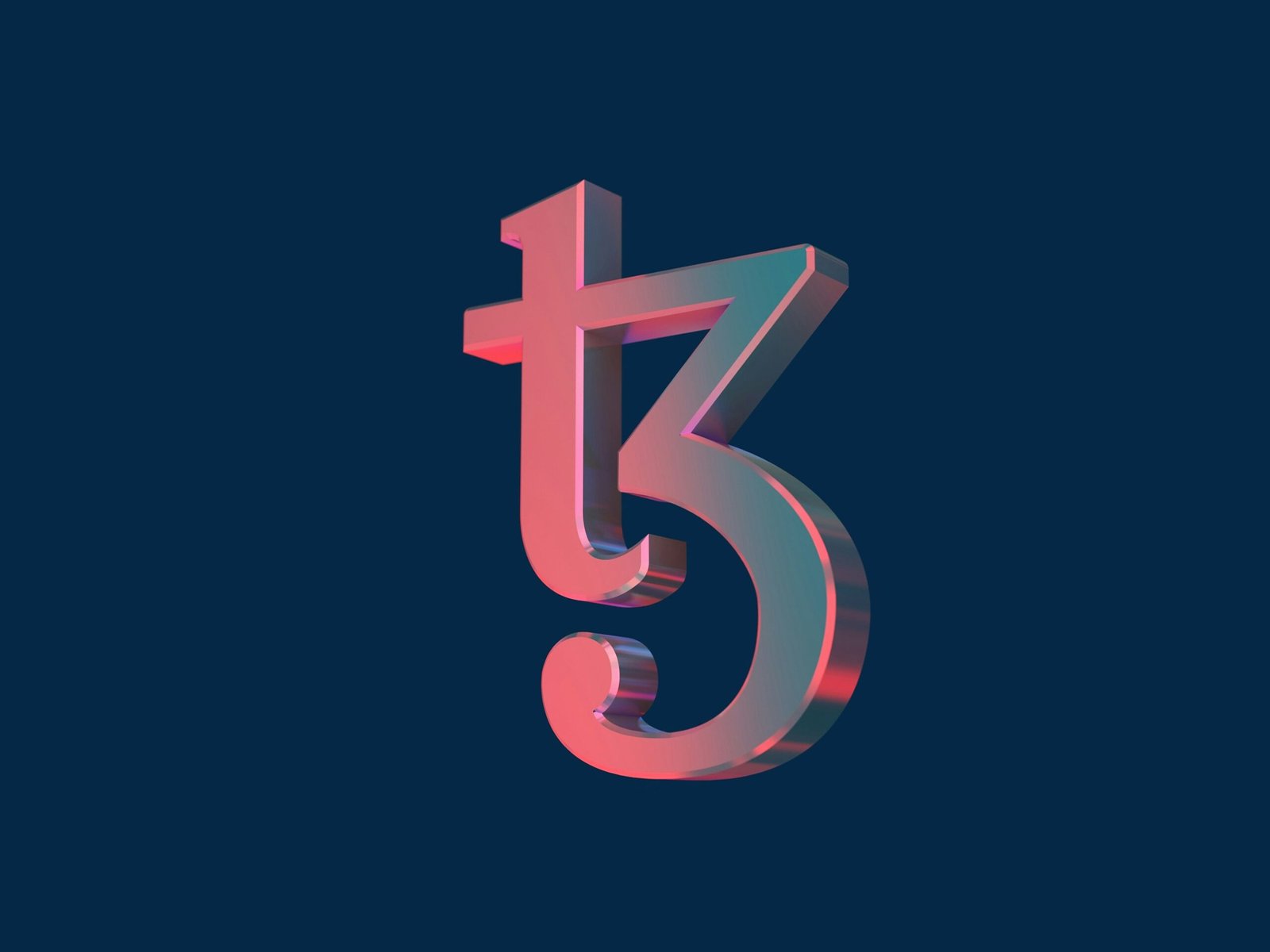The Intriguing Introduction to Blockchain Networks
Imagine a vast digital tapestry, woven together by threads of information, each strand interconnected yet distinctly unique. This is the essence of a blockchain network, an innovative masterpiece that transcends traditional notions of trust, ownership, and consensus. In a world brimming with intricate complexities, blockchain serves as a beacon of transparency and efficiency, quietly revolutionizing multiple sectors from finance to supply chain management. The architecture of these networks operates not through central authority, but rather through a decentralized framework where every participant plays a role in maintaining the integrity of the information held within.
At its core, a blockchain consists of a series of blocks containing data, each linked to one another in a chronological sequence. This structure not only ensures security through cryptographic methods but also encourages collaboration among its users. Picture a group of friends sharing a unique recipe book. Each person contributes their favorite dish, and together they create a cooking legacy, easily accessible and immutable. In this metaphor, the recipe book embodies the blockchain, where every entry represents a block filled with trust and consensus among the contributors.
Furthermore, blockchain networks invite a broader philosophical discourse about the nature of truth and authenticity. By displacing centralized institutions, they challenge our understanding of authority and the validity of shared knowledge. Through the lenses of science and philosophy, the potential implications of these networks provoke fundamental questions: What does it mean to trust information born from a collective rather than a singular source? How can decentralized systems redefine our interpersonal relationships and societal structures?
As we delve deeper into the mechanics and implications of blockchain, the journey will reveal not only technological innovations but also significant philosophical considerations. This exploration encourages us to contemplate the future shaped by these digital networks and the profound impact they hold for humanity.
Understanding Blockchain Networks: The Basics
Blockchain networks represent a revolutionary shift in how data is stored, shared, and managed. At its core, a blockchain is a decentralized ledger technology that allows multiple parties to maintain a shared database without relying on a central authority. This innovative system operates through a series of interconnected digital blocks, each containing a list of transactions. Once a block is filled, it is cryptographically sealed and linked to the previous block, creating a chronological chain of data. This structure not only ensures data integrity but also enhances transparency throughout the network.
The appeal of blockchain networks stems primarily from their key characteristics, notably decentralization, security, and transparency. Decentralization means that data is distributed across a network of nodes rather than being controlled by a single entity, thereby reducing the risk of fraud and enhancing user autonomy. Each participant within the network has access to the same information, which fosters an environment of trust and collaboration among users.
Security is another fundamental advantage of blockchain technology. Utilizing sophisticated cryptographic techniques, blockchain networks safeguard data against unauthorized access and modifications. The consensus mechanisms employed (such as Proof of Work and Proof of Stake) further solidify security by ensuring that only legitimate transactions are validated and added to the blockchain.
Transparency, a hallmark of blockchain networks, allows participants to see transactions as they occur, encouraging accountability among users. Every transaction is recorded on the blockchain, resulting in an immutable history that can be audited at any time. This openness can lead to increased trust in various applications, from cryptocurrency transactions to supply chain management.
With its combination of decentralization, security, and transparency, blockchain technology has gained prominence in modern society, impacting various sectors and driving interest in its potential applications. Understanding the fundamental principles of blockchain networks is crucial for anyone looking to navigate this complex technological landscape.
The Significance of Blockchain in Modern Science
Blockchain technology has emerged as a transformative force within modern science, providing innovative solutions to longstanding challenges in data sharing, research integrity, and collaborative projects. The decentralized and secure nature of blockchain networks presents a unique opportunity for scientific communities to enhance transparency and accountability in research endeavors. By enabling researchers to share data freely and securely, blockchain fosters increased collaboration across disciplines and institutions.
One of the most significant applications of blockchain in science is in data sharing. Traditional methods of data exchange often suffer from inefficiencies and trust issues, which can hinder progress in many fields. However, with blockchain, researchers can store data in an immutable ledger, ensuring that once information is recorded, it cannot be altered or deleted. This characteristic fosters trust among collaborators and encourages the sharing of datasets that might otherwise remain siloed. For instance, the use of blockchain in medical research facilitates the secure exchange of patient data while ensuring compliance with privacy regulations, ultimately accelerating the pace of scientific discovery.
Moreover, blockchain technology aids in maintaining research integrity. By offering a verifiable record of all contributions made during a research project, scientists can protect their intellectual property and prevent misconduct. Applications such as smart contracts can automate processes, such as grant distribution, thereby ensuring that funds are utilized appropriately and only after predefined milestones are met. This level of control can reduce fraudulent activities and ensure that the outcomes are genuine, further solidifying the credibility of scientific findings.
In addition to enhancing data integrity and sharing, blockchain networks facilitate groundbreaking collaborative projects across various scientific fields. By creating a shared platform where multiple stakeholders can contribute, scientists can collectively work on complex problems such as climate change or disease outbreaks. The resultant synergy not only speeds up innovation but also enriches the quality of research outcomes. Blockchain is not just a technological advancement; it represents a paradigm shift in how science is conducted, fundamentally reshaping the landscape of research for the better.
Philosophical Implications of Blockchain Networks
The emergence of blockchain technology has ignited a rich discourse surrounding its philosophical ramifications, particularly concerning trust, authority, ethics, and the essence of knowledge within decentralized systems. At its core, blockchain represents a significant shift in how individuals and institutions relate to one another and how they establish trust. Traditionally, trust has been placed in centralized authorities, such as banks or governments; however, blockchain allows for trust to be distributed among participants in a network, leading to a more democratized understanding of authority. This transition invites us to reevaluate our assumptions about who or what can be deemed trustworthy.
Moreover, the ethical considerations surrounding blockchain networks are profound. The creation of immutable ledgers poses questions about accountability and transparency. If information is to be permanently recorded on the blockchain, it becomes crucial to consider the implications of data integrity and the moral responsibilities tied to the information entered. As individuals and organizations engage with blockchain, they must navigate the complexities of consent, data ownership, and the potential for misuse, prompting a re-examination of ethical frameworks that govern technological interaction.
In addition, the nature of knowledge within blockchain systems can be scrutinized through a philosophical lens. The decentralized model implies an egalitarian approach to knowledge dissemination, allowing all participants to contribute to and verify information. This raises vital questions regarding epistemology: How is knowledge validated in a system where traditional hierarchies are disrupted? Furthermore, what does it mean to “know” something when the verification process is spread across countless entities rather than being condensed in a centralized institution?
Thus, the intersection of blockchain technology and philosophy opens new avenues for understanding the shifting dynamics of trust, authority, and knowledge. By engaging with these implications, we can better appreciate how blockchain is not merely a technological innovation but a revolutionary concept that challenges and invites a deeper philosophical inquiry.
Real-World Applications of Blockchain Networks
Blockchain networks have emerged as transformative technologies across various sectors, providing enhanced transparency, security, and efficiency. In the financial sector, companies like Ripple have revolutionized cross-border payments. By utilizing blockchain technology, Ripple allows for near-instantaneous transaction settlements and substantially reduces fees compared to traditional banking systems. This capability is increasingly being embraced by financial institutions globally, highlighting the significant role blockchain can play in modern finance.
Healthcare is another domain witnessing the benefits of blockchain. Several organizations are exploring how decentralized networks can improve patient data management. For example, the MediLedger Project uses blockchain to securely share pharmaceutical supply chain information among stakeholders, ensuring the traceability of drugs. This not only enhances accountability but also safeguards against counterfeit medications, ultimately leading to improved patient care and safety.
Supply chain management is also being significantly transformed by blockchain networks. Firms like IBM and Maersk are collaborating on blockchain applications to enhance the transparency and efficiency of maritime shipping. The TradeLens platform, built on blockchain technology, integrates data from various parties involved in the supply chain, streamlining processes and minimizing delays. By maintaining an immutable record of transactions, stakeholders can easily track the provenance of goods, thereby fostering greater trust and collaboration among partners.
Beyond these sectors, blockchain technology is branching into areas such as voting, real estate, and intellectual property management. Innovations like Civic and U-Port utilize blockchain to empower individuals with greater control over their identities and personal data. Vermont’s legislative move to accept blockchain-recorded land titles illustrates the potential for simplifying property transactions and reducing fraud. These examples underscore the practical implications of blockchain, showcasing its promise in delivering transformative solutions across diverse industries.
Tales from the Blockchain: Case Studies
The rise of blockchain technology has opened new avenues for organizations seeking innovative solutions to traditional problems. One compelling case study comes from a prominent supply chain company that struggled with transparency and traceability. With numerous intermediaries involved in their operations, the company decided to adopt blockchain networks to streamline processes. By utilizing this decentralized ledger technology, they were able to create an immutable record of product origin and journey. This not only enhanced transparency but also significantly reduced fraud and operational discrepancies, ensuring the integrity of their product flow. The transformation led to increased consumer trust, reflected in skyrocketing sales and customer loyalty.
Another notable example involves a major financial institution that faced issues with cross-border payments. The traditional methods were slow, costly, and laden with inefficiencies. By implementing blockchain networks, this institution was able to facilitate near-instantaneous transactions across borders, adapting blockchain’s real-time capabilities. This not only slashed transaction costs but also simplified the reconciliation process, allowing for efficient cash flow management. The transformation enabled the bank to provide better services to its customers and outpace competitors who were slow to adapt to this technological advancement.
In the realm of healthcare, a cooperative of hospitals developed a blockchain-based platform to secure medical records. This initiative was spearheaded by the need for privacy, accuracy, and expediency. With patient data often disjointed across various systems, integrating blockchain technology provided a single source of truth. This decentralized approach ensured that patients had control over their health information, with the ability to share it securely with providers as needed. The outcome was a marked improvement in patient outcomes and a streamlined administrative process that many hospitals have since sought to replicate.
Challenges and Limitations of Blockchain Networks
While blockchain technology holds transformative potential, it is essential to address the challenges and limitations that accompany its implementation. Scalability is one of the most pressing concerns. As blockchain networks grow, maintaining an efficient transaction throughput becomes increasingly difficult. Many blockchain systems face limitations in processing speed, with popular platforms like Bitcoin and Ethereum experiencing congestion during peak usage periods. This bottleneck can lead to slower transaction times and higher fees, which may deter use in a fast-paced economic environment.
Another significant challenge is energy consumption. The proof-of-work mechanism employed by several blockchain networks, including Bitcoin, requires substantial computational power, leading to high energy usage. The environmental impact of such energy demands is a topic of heated debate, with critics arguing that the ecological footprint of blockchain technology may outweigh its benefits. Consequently, there is a call for adopting more energy-efficient consensus algorithms, such as proof-of-stake, which do not require the same level of computational intensity.
Regulatory issues also pose a considerable challenge to the broader adoption of blockchain networks. As governments strive to create frameworks to govern cryptocurrencies and decentralized technologies, the lack of clear regulatory guidelines can hinder innovation. Furthermore, differing regulations across jurisdictions can create discrepancies in how blockchain networks operate globally. Participants may face legal uncertainties, negatively impacting investment and development within the blockchain ecosystem.
Finally, security vulnerabilities must not be overlooked. While many believe blockchain technology is secure, several incidents involving hacks and exploits have highlighted potential weaknesses in smart contracts and decentralized applications. Addressing these vulnerabilities requires ongoing research and development efforts to fortify blockchain networks against emerging threats.
The Future of Blockchain Networks: What Lies Ahead?
The future of blockchain networks is poised for significant transformation as we delve deeper into their potential applications across various sectors. The concept of a ‘blockchain society’ is gaining traction, envisioning a world where decentralized systems underpin many aspects of daily life. This evolution suggests that blockchain technology will not only enhance transparency and security but also democratize data ownership and management, leading to increased trust among individuals and organizations.
Emerging trends indicate that industries such as finance, supply chain, and healthcare are likely to be at the forefront of embracing blockchain solutions. In finance, for instance, we might witness the integration of decentralized finance (DeFi) applications that offer greater accessibility to financial services, reduced transaction costs, and improved efficiency. Similarly, supply chain management can benefit from blockchain by enhancing traceability and accountability in product sourcing and distribution, resulting in more ethical and sustainable practices.
Furthermore, the rise of non-fungible tokens (NFTs) signifies a paradigm shift in creative industries, enabling artists and creators to monetize their works directly. As these trends unfold, regulatory frameworks will need to evolve to accommodate the rapidly changing landscape of blockchain networks. Centralized authorities may find themselves adapting to a more decentralized approach, which could lead to innovative collaborations and partnerships between public and private sectors.
In essence, the possibilities are vast and multifaceted, with the potential for blockchain networks to reshape societal norms, business models, and consumer behavior. As we explore these advancements, it is crucial for stakeholders to engage in dialogue, ensuring that the development of blockchain technology promotes inclusivity and fosters positive societal change. The journey ahead promises to be as transformative as it is intriguing, inviting us all to reflect on the broader implications of a blockchain-driven society.
Concluding Thoughts: The Lessons and Mysteries of Blockchain Networks
As we traverse the intricate landscape of blockchain networks, it becomes evident that these systems are not merely technological innovations; they are profound philosophical constructs that challenge our understanding of trust, transparency, and decentralized governance. The exploration of blockchain unveils critical lessons that extend beyond the realm of data management into the depths of social contracts and the evolution of human interaction. Each blockchain network serves as a digital testament to the collective consciousness, emphasizing communal agreements encoded not just in software, but in the very fabric of society.
The technology encourages a reevaluation of existing paradigms, compelling individuals and organizations to confront long-held beliefs regarding authority and power dynamics. The distributed nature of blockchain networks promotes a novel approach to data ownership and privacy, shifting the balance from centralized entities to individual users. This shift is a cornerstone of its philosophical significance, as it resonates with ideals of autonomy and empowerment, raising important questions about the future of governance and community-based decision-making.
Moreover, as we navigate the complexities of blockchain’s implications on various sectors—from finance to supply chains—its potential to foster innovation and disrupt traditional models cannot be understated. However, the mysteries that accompany blockchain technology still warrant scrutiny. As ethical concerns arise regarding accessibility, regulatory frameworks, and environmental impacts, are we prepared to tackle these challenges comprehensively? Will we fully embrace the opportunities presented by blockchain networks or let apprehensions govern our approach?
In summary, blockchain is a convergence of science and philosophy that invites us to rethink our relationships with information and each other. As we conclude this exploration, we encourage readers to engage with these questions: How will the evolution of blockchain networks shape our future interactions? What lessons can we glean from its complexities to forge a more equitable digital world? Let the discussion continue as we delve deeper into the enigma that is blockchain.






